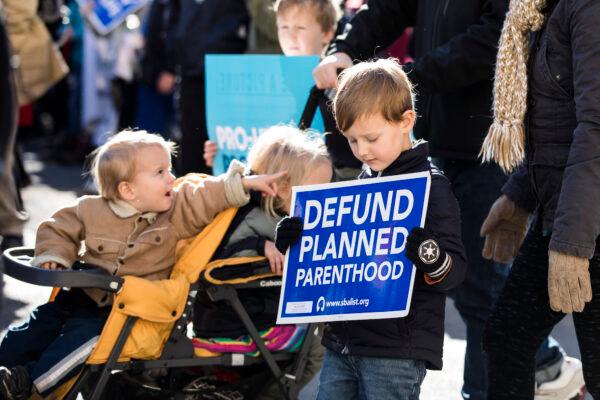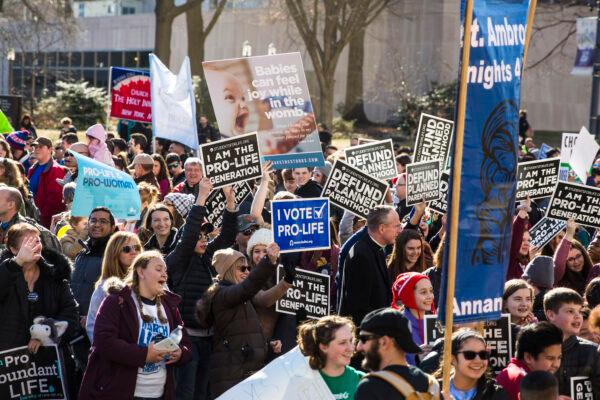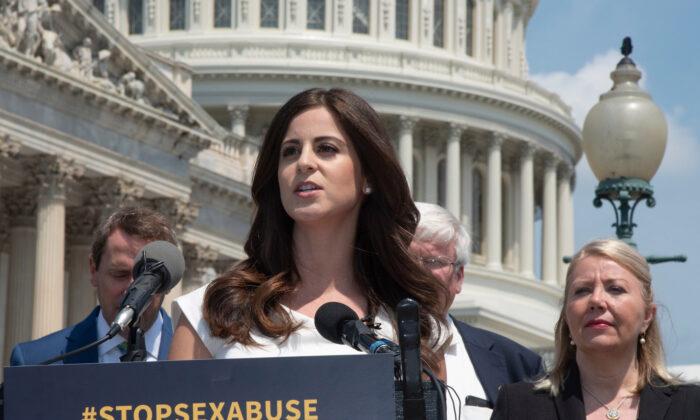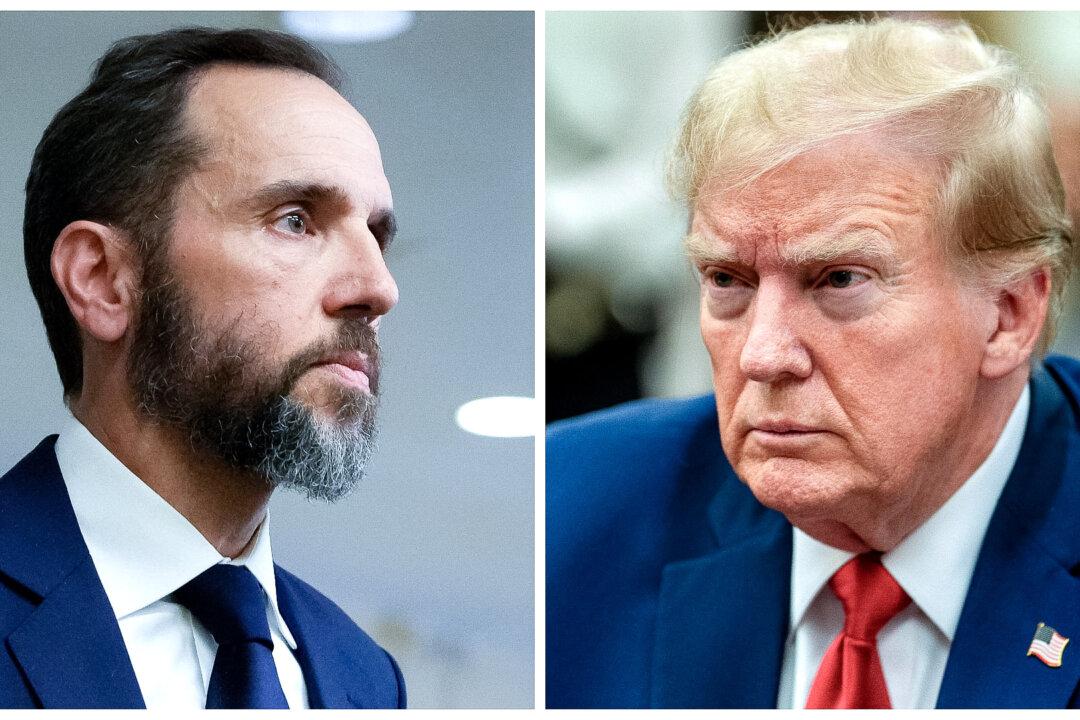Lila Rose was in her teens when she came across an abortion handbook, and knowing nothing about the actual procedure, she flipped through the pamphlet and saw illustrations of young children—one of the earliest a 10-week-old in the womb being dismembered via suction abortion.
Ten weeks in, a person already has all the necessary vital organs formed. It struck her that abortion by definition was the violent act of taking a life.
“Most people are not passionately decided about abortion. They’re actually fairly uninformed and haven’t taken a lot of time to think about it, or maybe they’ve been involved in the past with an abortion and they’ve buried the pain they felt, or they feel it’s a political issue that'll never be resolved—most people haven’t taken the time to take about the fact that there is a child growing rapidly even in just the first few weeks of pregnancy,” said Rose, who founded the pro-life organization Live Action at age 15.
“There have been decades and decades of propaganda pushed by powerful political sources, by many media, by the abortion industry, by the entertainment world, and even in education.”
Originally intended as an educational resource for her local community, Live Action has since become a leading voice in the national and even global fight against abortion. In just the past few years, its followers have tripled, growing close to 5 million, largely because pro-life grassroots organizations are springing up on the local level all across the country.
“We do see hearts and minds change all the time,” Rose said. “I’m very hopeful; the truth is very powerful and when it’s spoken, when it’s shared, it changes everything. And that’s what I’m seeing in our culture, despite the attacks that I see, the evil that’s being done, I see tremendous good. And I think we can turn this around, we can restore our nation and build a culture of life.”

What Is Abortion?
When Rose says “propaganda,” she isn’t exaggerating. Many who believe abortion to be a human right have built this belief on top of a mountain of falsities. As a result, Live Action has seen countless people change their stance on abortion once they learn the truth.“I started doing investigative reporting in college, that’s when I realized how much bias there was in media and how little truth was being told,” said Rose.
Abortion in the news was always framed positively; media would downplay or not talk about the risks that come with abortion, much less be honest about the fact that it ends a human life. But as Rose started reporting on what goes on inside abortion clinics, she saw hearts and minds changing. It inspired her to expand the organization.
But perhaps the biggest surprise for some people new to learning about abortion is the fact that life begins with conception has nothing to do with belief, and isn’t a partisan issue; it is instead what biologists have scientifically confirmed.
An abortion also isn’t health care. Doctors, both for and against abortion, have confirmed that an abortion is never a necessary life-saving procedure. There are cases where it is difficult or even impossible to save both the mother and growing child, and in those cases, it may be necessary to induce labor and end up with a slim chance of supporting the premature baby outside of the womb, but abortion is the act of specifically targeting and killing the growing child in the womb.
“Roe v. Wade was bad, bad law, it was a poorly cited case that invented this false right to abortion that is not in our Constitution,” said Rose. If the rationale for abortion is that women should be able to choose to kill unborn children, a problem of unequal treatment of human life arises wherein some people in society get to decide whether others, who are more vulnerable, are allowed to live. This has resulted in abortions based on the baby’s sex, or deciding that children with certain conditions are less deserving of life than others.
Today, the multibillion-dollar abortion industry continues to lie about abortion when it claims abortion is risk-free and humane. Knowing its history, Rose and other pro-life advocates weren’t surprised when abortion clinics pushed to stay open during the recent pandemic stay-at-home orders under the guise of health care. But even more concerning was the industry’s push to make the “abortion pill” something people can obtain without an in-clinic appointment.

The Pill Problem
While abortions have been on the decline over the past decade, there was a 2 percent increase from 2017 to 2018, largely because of the increase in abortion pill use.The pill procedure is meant for pregnancies up 10 weeks, after which complication rates can double, but with no doctor’s appointment necessary, the pill may be distributed to women further along in pregnancy. Clinics vary widely in how they describe the procedure and potential risks, some likening it to a period, so there are horror stories abound from women who were shocked to see the fetus and amount of blood afterward. Clinics also fail to disclose that the abortion can be reversible, if the woman has only taken the first pill.
‘Culture of Death’
Rose and others have pointed out how a culture that can so easily kill more than 2,300 human lives a day is one in which we lose respect for human dignity.“I think that a culture that would kill a child and throw them out like medical waste, a child just because they’re not born yet, it shouldn’t surprise us that that’s a culture that would use children for the pleasure of adults and steal their innocence, it’s a disrespect for children and lack of respect for humans,” Rose said. “It’s part of the same culture.”
“If we want to combat [it], we have to reassert human dignity,” Rose said. “If we can do that, if we can say every human being is precious and made in the image and likeness of God, has basic human rights, deserves love, deserves justice, then that is a rejection of all these attacks on children.”
Culture and law are intertwined, Rose said, so Live Action is committed to working on both.
“We certainly believe that until people change, policy won’t change, so you need to do the work to educate, you need to do the work to activate, but you can’t ignore the political space because ultimately the protection of the pre-born is a legal issue at its core,” Rose said. “They need to have legal protection just like you or I do, equal protection under the law, that is a right promised to them just like it is promised to us under the 14th amendment.”
Abortion laws vary widely from state to state, so it really is in the hands of local grassroots organizations and advocates, Rose added, and that movement is growing—especially among younger people.







Friends Read Free